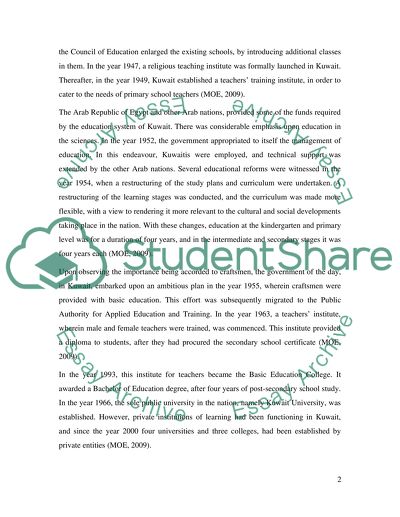Cite this document
(“The education system in kuwait Essay Example | Topics and Well Written Essays - 4750 words”, n.d.)
The education system in kuwait Essay Example | Topics and Well Written Essays - 4750 words. Retrieved from https://studentshare.org/education/1655025-the-education-system-in-kuwait
The education system in kuwait Essay Example | Topics and Well Written Essays - 4750 words. Retrieved from https://studentshare.org/education/1655025-the-education-system-in-kuwait
(The Education System in Kuwait Essay Example | Topics and Well Written Essays - 4750 Words)
The Education System in Kuwait Essay Example | Topics and Well Written Essays - 4750 Words. https://studentshare.org/education/1655025-the-education-system-in-kuwait.
The Education System in Kuwait Essay Example | Topics and Well Written Essays - 4750 Words. https://studentshare.org/education/1655025-the-education-system-in-kuwait.
“The Education System in Kuwait Essay Example | Topics and Well Written Essays - 4750 Words”, n.d. https://studentshare.org/education/1655025-the-education-system-in-kuwait.


